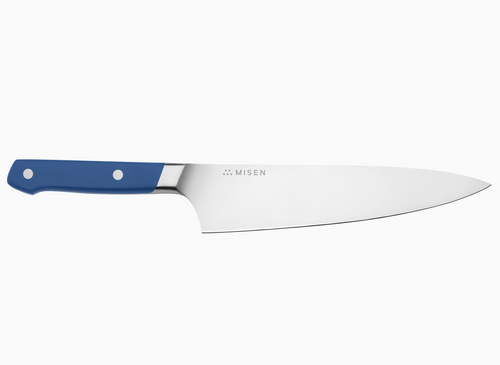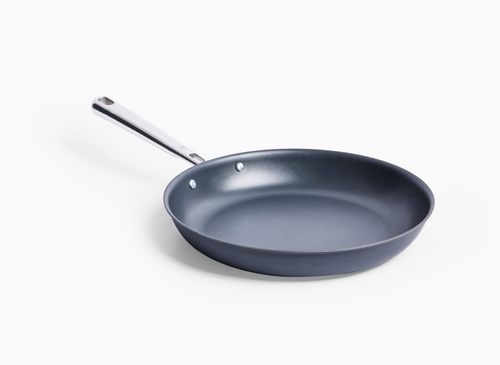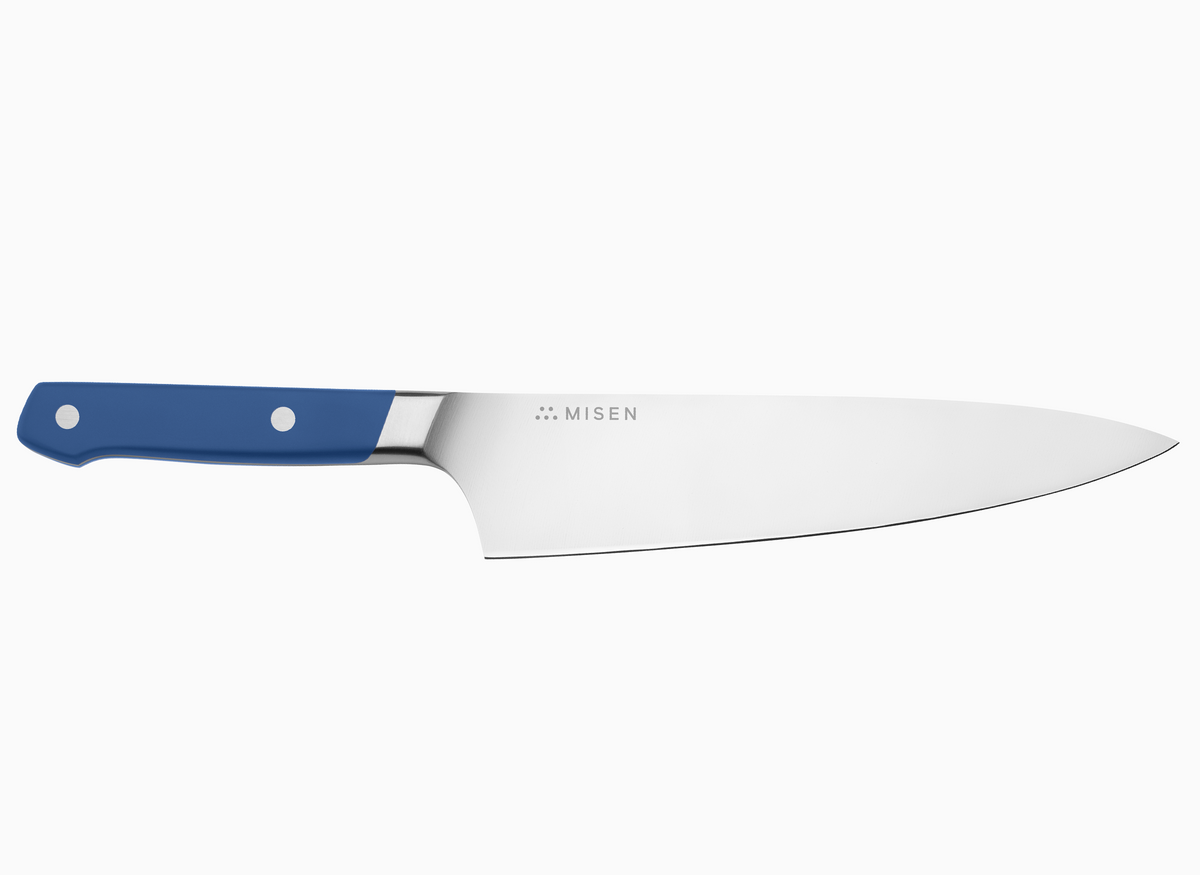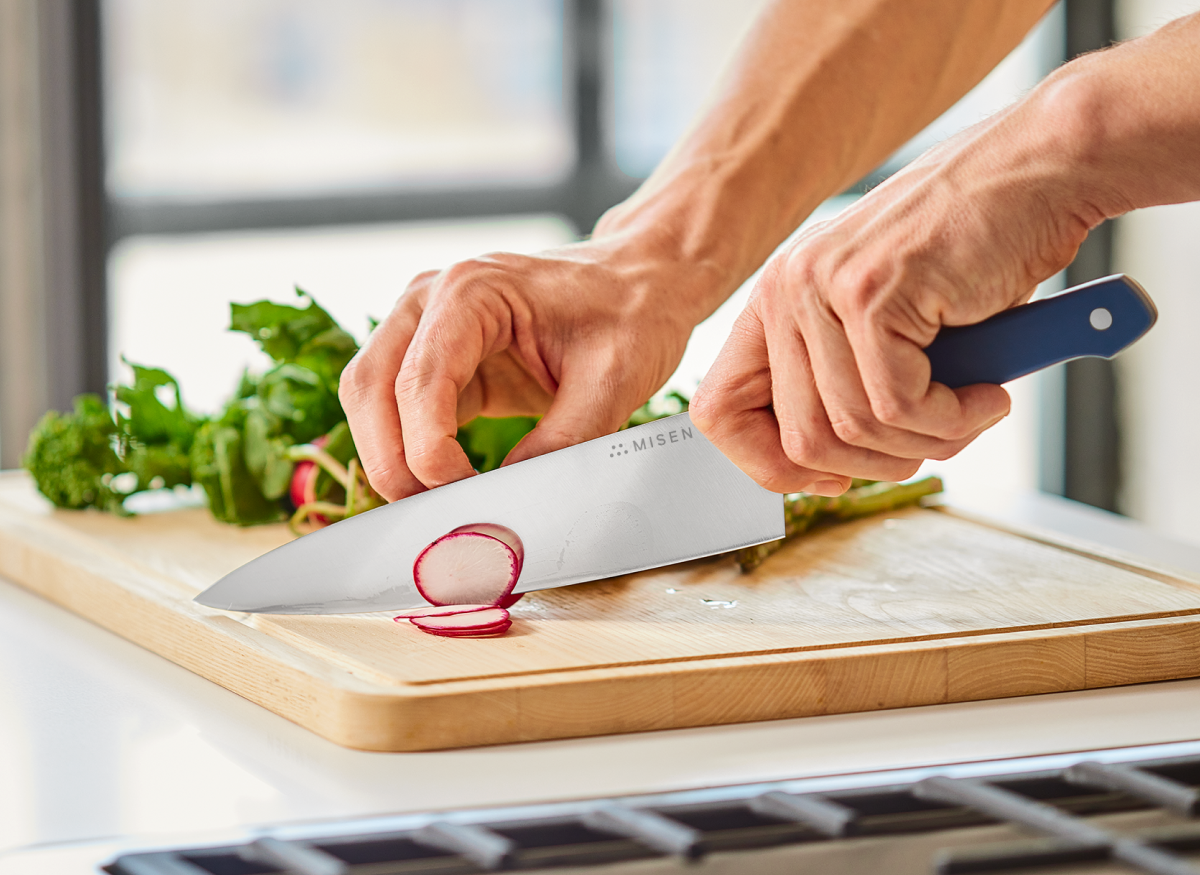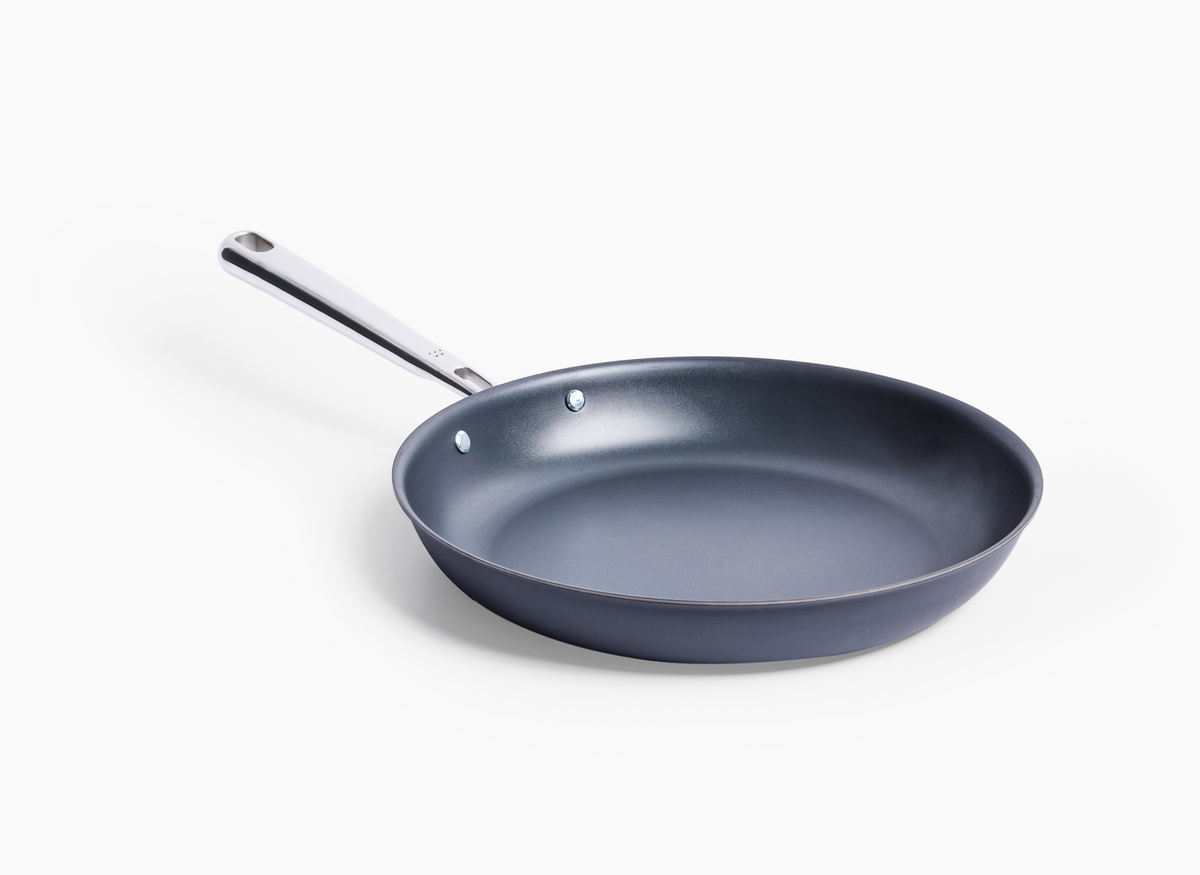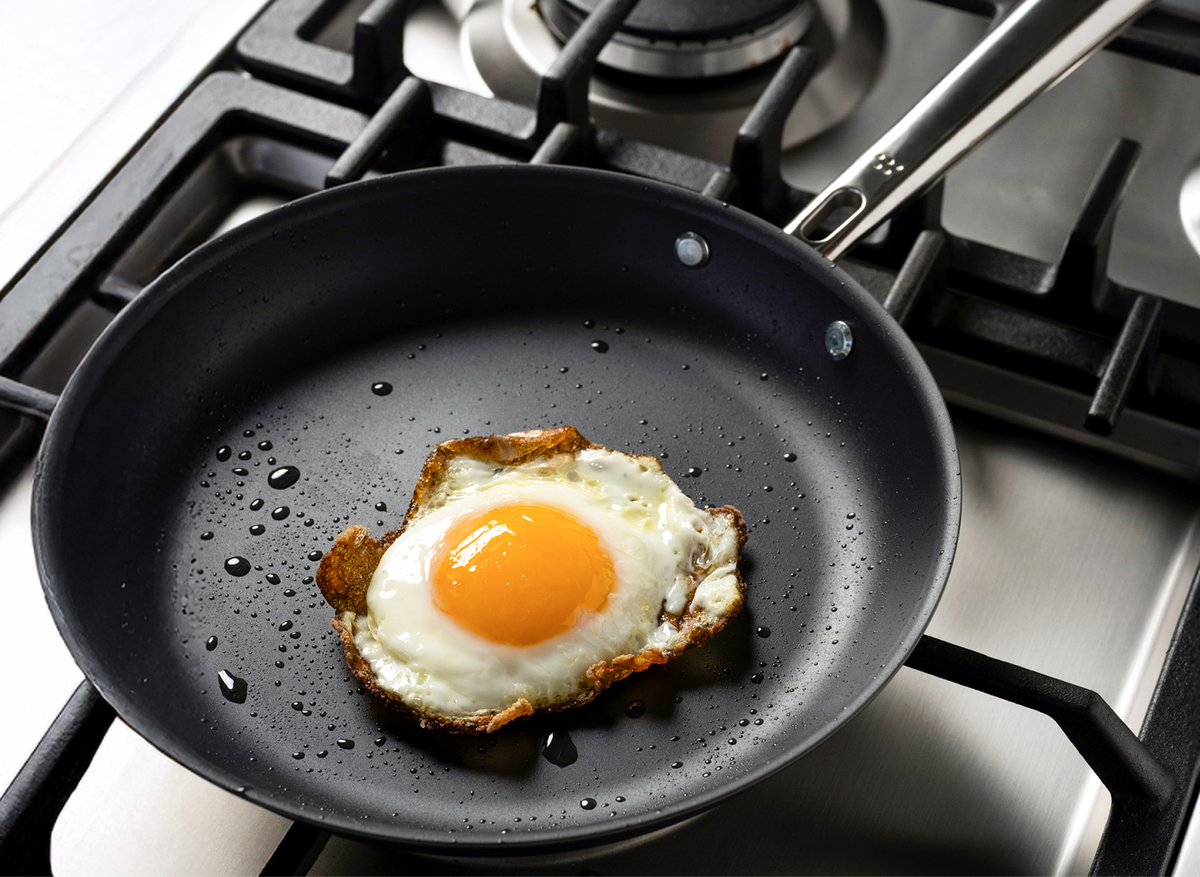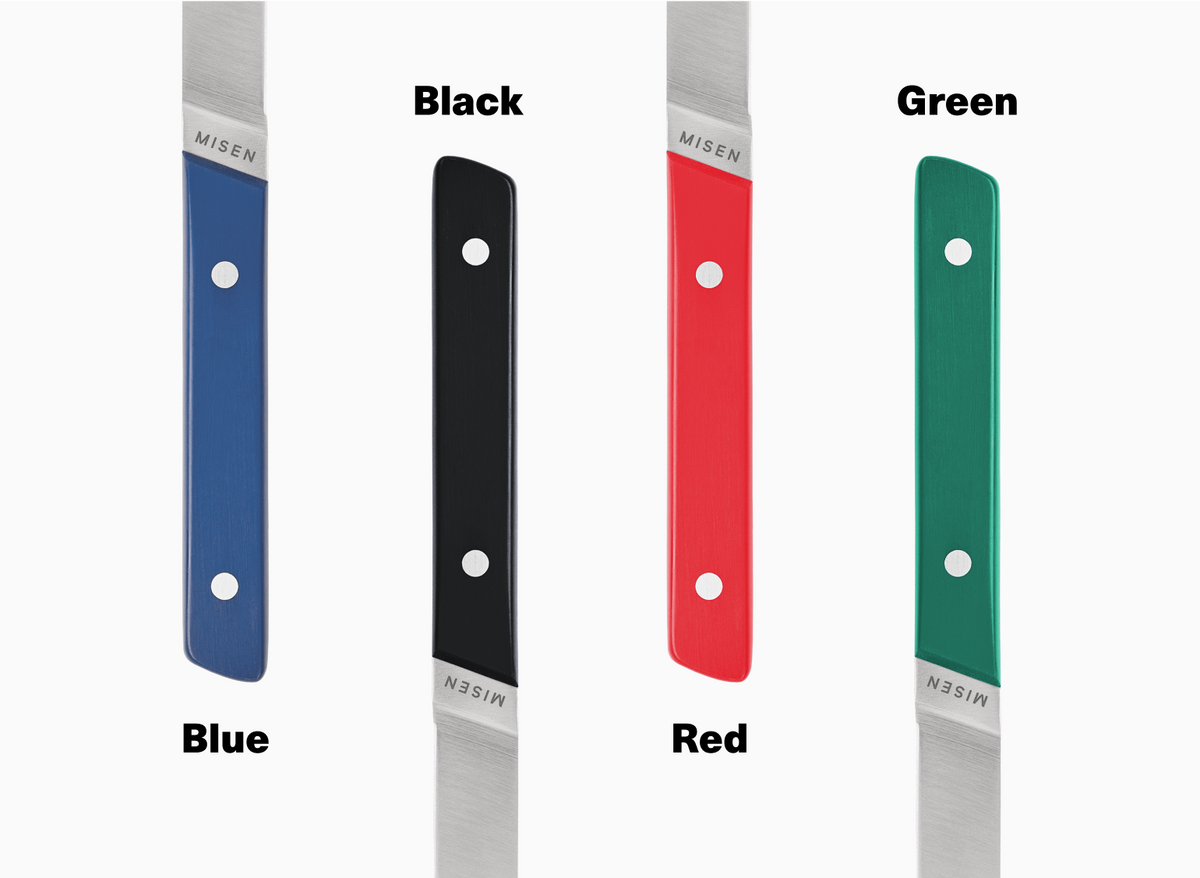Heavy Cream Substitute: 7 Best Alternatives for Every Recipe

Introduction
The Kitchen Emergency: When You're Out of Heavy Cream
Out of heavy cream? Don't panic. You probably have everything you need to make a great substitute already in your kitchen. Heavy cream contains 36-40% milk fat and adds richness to countless recipes [1]. But here's the good news - whether you forgot to buy it, avoid dairy, or just need a quick fix, there are simple alternatives that work just as well. The trick is choosing the right substitute for what you're making. Some work perfectly in soups and sauces, while others can even be whipped for desserts [2]. Let's turn that kitchen crisis into a learning opportunity - you might even discover a new favorite ingredient along the way.
What Makes Heavy Cream Special (and Hard to Replace)
What makes heavy cream so special? It's all about the fat - at 36-40%, heavy cream has enough to whip into fluffy peaks, thicken sauces beautifully, and make baked goods incredibly tender [4]. When you whip it, those fat molecules clump together to create stable structure [5]. That's why finding the perfect substitute can be tricky. Each alternative works differently depending on what you're making, so understanding your recipe's needs is key to success.
The 7 Best Substitutes You'll Learn About
Here's what you'll discover: seven reliable heavy cream substitutes that actually work. We'll cover dairy options like the classic milk-butter combo and the half-and-half trick that saves the day in your favorite stainless steel pan. You'll learn about plant-based heroes like coconut cream that whips beautifully and silken tofu that creates surprising creaminess. We'll explore pantry staples like evaporated milk and show you how to make your own cream at home. By the end, you'll know exactly which substitute works best for whipping, cooking, baking, or adding to your morning coffee.
Understanding Heavy Cream and Why You Might Need a Substitute
Heavy cream's 36-40% milk fat content enables whipping, thickening, and creating tender baked goods - qualities that make finding the right substitute crucial.
What Exactly Is Heavy Cream? (Fat Content and Properties)
Heavy cream, also known as heavy whipping cream, is the richest dairy product you'll find in the refrigerated section. With its 36-40% milk fat content, it has a smooth, velvety texture and slightly sweet flavor that enhances both sweet and savory dishes [4]. This high fat content is what gives heavy cream its magical properties - it can be whipped into stable peaks, thicken sauces without curdling, and create incredibly tender baked goods. When you whip or churn heavy cream, those fat molecules clump together, transforming liquid cream into whipped cream in minutes, or butter with a bit more churning [5].
Heavy Cream vs. Whipping Cream vs. Half-and-Half
Let's break down the key differences between these common dairy products - it all comes down to fat content and what you're making. Heavy cream is the richest option at 36-40% milk fat, which is why it whips into those perfect stiff peaks you need for toppings and creates that luxurious texture in your favorite recipes. Whipping cream, with 30-35% milk fat, still whips up nicely but produces lighter, airier peaks that won't hold their shape quite as long [7]. Half-and-half sits at the lighter end with just 10.5-18% milk fat - it's made from equal parts whole milk and cream, making it perfect for your morning coffee or adding a touch of richness to dishes without going overboard [8].
Here's the practical takeaway: heavy cream and whipping cream can often swap places in recipes like custards and ice cream (though heavy cream will give you richer results), but half-and-half won't whip no matter how long you beat it [6]. If you need whipped toppings, heavy cream is your only reliable choice for peaks that actually stay put.
Common Reasons for Seeking Alternatives (Dietary, Availability, Cost)
You might find yourself looking for heavy cream alternatives for several reasons. First up, dietary needs - whether you're avoiding dairy due to lactose intolerance or following a vegan lifestyle, you'll need plant-based options. Then there's the health factor: heavy cream packs a serious caloric punch at 809 calories per cup, while alternatives like evaporated milk contain just 338 calories [9]. That's a big difference if you're watching your intake.
Let's not forget the classic kitchen emergency - you're mid-recipe and realize the heavy cream carton is empty. We've all been there. Cost can also be a factor, especially if you're cooking regularly. And here's something interesting: some alternatives actually boost the nutritional value of your dish. Silken tofu, for instance, adds protein while maintaining that creamy texture you're after. The key is finding the right substitute for your specific situation.
How Different Cooking Applications Affect Your Substitute Choice
Choosing the right substitute really depends on what you're making. If you need something that whips, your options are limited - coconut cream is one of the few alternatives that can achieve stiff peaks, though you'll taste that coconut flavor. For soups and sauces cooked in your favorite stainless steel saucier, most substitutes work well since they don't need to hold their shape. Greek yogurt adds tanginess to creamy soups but should be stirred in off-heat to prevent curdling [10].
Baking requires more careful consideration. The milk-butter combination works beautifully in most recipes, while evaporated milk provides moisture without excessive fat. For coffee and beverages, half-and-half or any plant-based creamer does the job perfectly - you don't need the whipping capability here. Understanding these differences helps you choose wisely and avoid disappointment.
Classic Dairy-Based Heavy Cream Substitutes
The milk and butter combination creates a versatile heavy cream substitute perfect for cooking and baking, though it won't whip into peaks.
Milk and Butter: The Most Versatile Substitute
The milk and butter combination stands out as the most versatile heavy cream substitute you'll find. Mix 3/4 cup whole milk with 1/4 cup melted butter to match heavy cream's richness - perfect for most cooking and baking needs [1]. This simple substitute works great when you're making creamy soups or adding richness to sauces. Just remember it won't whip into peaks for dessert toppings. Want to make it thicker? Add a tablespoon of flour when using lower-fat milk. For detailed instructions on making and storing this substitute, check out the "Making Your Own Heavy Cream at Home" section below.
Half-and-Half and Butter: When You Need Extra Richness
Half-and-half mixed with butter delivers the closest match to heavy cream's taste and texture. Combine ¾ cup half-and-half with ¼ cup melted unsalted butter to replace 1 cup of heavy cream [11]. This rich combination works beautifully in cooking and baking, though like other butter-based substitutes, it won't whip. For lighter applications, use half-and-half straight as a 1:1 substitute. Pro tip: Add 1-2 teaspoons of cornstarch per cup when heating to prevent curdling - especially helpful when making smooth sauces and creamy soups [12].
Evaporated Milk: The Pantry Staple Solution
Evaporated milk serves as your pantry-stable backup plan. This concentrated milk (with half the water removed) brings a slightly caramelized sweetness that enhances dishes like caramel sauce or crème brûlée [13]. Use it 1:1 in place of heavy cream for liquid applications - it's particularly good in baked goods where it adds moisture without excessive fat. Choose whole-milk varieties for best results and remember it won't whip. Keep a can on hand for those moments when fresh cream isn't available.
Greek Yogurt or Sour Cream: For Tangy Creaminess
Greek yogurt thinned with milk offers a protein-packed alternative with a pleasant tang. Mix equal parts Greek yogurt and whole milk for a lighter substitute that shines in savory dishes. The natural acidity brightens soups and sauces beautifully. Just remember to remove your dish from heat before stirring it in to prevent curdling [10]. Skip this option for baking - the acidity can interfere with proper rise. For desserts, whisk in a touch of sugar and milk to create a tangy topping perfect for fresh fruit or cake. This substitute works best when you want to add nutrition without sacrificing creaminess.
Plant-Based and Vegan Heavy Cream Alternatives
Coconut cream is the only plant-based alternative that reliably whips into stiff peaks, making it essential for vegan desserts and frostings.
Coconut Cream: The Natural Plant-Based Alternative
Coconut cream stands out as your best plant-based option for heavy cream, working in both cooking and whipping applications. You can buy it ready-made or make your own by chilling full-fat coconut milk overnight and scooping off the thick cream that rises to the top [14]. This dairy-free alternative replaces heavy cream 1:1 in recipes, making it especially handy for vegan baking and desserts [14]. What makes coconut cream special? It's one of the few non-dairy options that actually whips into stiff peaks for toppings and frostings [14]. The high fat content lets it perform much like traditional heavy cream, though you'll taste that coconut flavor - great for tropical desserts, less ideal for savory cream sauces [1]. For best results, choose pure coconut cream without additives or thickeners [14].
Silken Tofu and Soy Milk: For Neutral Flavor Profiles
Silken tofu blended with soy milk creates a protein-packed alternative with a neutral flavor that won't compete with your recipe. Simply blend 8 oz of silken tofu with ¼ cup of plant milk until silky smooth [15]. The tofu's high protein content provides structure while keeping that creamy consistency you need [16]. This blend works particularly well in pudding-like desserts - think cheesecakes and cream pies. You can even make it into a whipped topping by adding vanilla and a touch of sugar [16]. For savory dishes, try using flavored silken tofu to add an extra dimension [15]. While it won't whip up quite like dairy cream, the neutral taste makes it perfect when you want to avoid the coconut flavor of other plant-based options [16].
Cashew or Almond Cream: Homemade Nut-Based Options
Homemade nut creams, especially cashew cream, give you a nutritious and versatile heavy cream alternative. Make cashew cream by blending soaked raw cashews with water in a 2:1 ratio for a thick, sour cream-like consistency [17]. Need it thinner? Just add more water and blend until smooth [18]. The neutral flavor works beautifully in everything from pasta sauces to soups. Want extra richness? Add a splash of olive oil and brighten it with fresh lemon juice [17]. You only need three ingredients - cashews, water, and salt - and it keeps in the fridge for 5-7 days [19]. Keep in mind that cashew cream won't whip like dairy cream. For the smoothest texture, use a high-powered blender and soak your cashews overnight or quick-soak them in boiling water for 5 minutes. A quality food processor can also do the job with a bit more patience.
Store-Bought Vegan Creams: What Works Best
Store-bought vegan heavy creams have become more available, though your options are still limited. Silk Heavy Whipping Cream gets good reviews but can be hard to track down [20]. Country Crock Plant Cream is another option, though these products cost more than making your own [15]. Most commercial vegan creams blend plant milks with thickeners, sweeteners, and flavorings [21]. Read labels carefully - "coconut cream" is what you want for cooking, while "cream of coconut" is sweetened for cocktails [21]. Here's the reality: most store-bought vegan creams won't whip properly. If you need whipped topping, look for products specifically labeled as dairy-free whipping cream, usually sold in spray canisters [21]. Always check for added sugars or flavors that might affect your recipe and adjust accordingly [21].
Choosing the Right Heavy Cream Substitute by Recipe Type
Coconut cream is basically your only reliable substitute for whipping - other alternatives simply won't hold peaks no matter what you've heard.
For Whipping: Substitutes That Can Hold Peaks
Let's be honest - if you need whipped cream, your options are limited. Coconut cream is basically your only reliable substitute that can actually hold peaks. As we covered in the plant-based section, you'll need to chill it overnight and use just the solid part. Add some confectioners' sugar to help stabilize those peaks [22].
Here's what won't work for whipping, no matter what you've heard: milk-butter combos, Greek yogurt mixtures, half-and-half blends, or that soy milk-olive oil mix. They're great for other uses, but they simply won't whip. Even products labeled "whipping cream" might disappoint if they're under 35% fat [1].
If you absolutely need a dairy-free whipped topping and don't want coconut flavor, your best bet is those pressurized canisters specifically made for the job [3].
For Cooking: Best Options for Soups, Sauces, and Savory Dishes
Soups and sauces are forgiving - you've got plenty of good options here. Your choice depends on what flavor profile you're after and whether you need dairy-free alternatives.
For creamy soups, try these approaches:
- Greek yogurt + milk: Adds protein and tang. Remember to remove your pan from heat before stirring it in, or you'll end up with curds [2]
- Silken tofu blend: Perfect for dairy-free cooking. It thickens beautifully and adds protein without much flavor [2]
- Cornstarch slurry: Mix 2 tablespoons cornstarch per cup of milk. Let it simmer for a full minute to activate - no shortcuts here [1]
- Half-and-half + butter: Use 7/8 cup half-and-half with 1/8 cup melted butter for the closest match to heavy cream's richness [3]
Pro tip: When making cream-based sauces in a stainless steel pan, keep the heat moderate and stir constantly. Cream cheese works great in dishes where its tang is welcome - think stroganoff or creamy tomato soup [3].
For Baking: Substitutes That Won't Affect Texture or Rise
Baking requires more precision than cooking, but you still have solid alternatives. The key is understanding how each substitute affects your final product.
Best baking substitutes:
- Evaporated milk: Your most reliable option. Use it 1:1 for heavy cream in any recipe where it's a liquid ingredient. It won't add the same richness, but your textures will be spot-on [13]
- Half-and-half + butter: Mix 7/8 cup half-and-half with 1/8 cup melted butter. This combo matches heavy cream's fat content, giving you tender, moist results [1]
- Coconut cream: Works 1:1 in dairy-free baking, but expect that coconut flavor. Great for tropical desserts, less so for vanilla pound cake [1]
What to avoid in baking: Skip Greek yogurt here - its acidity can mess with your rise and create odd textures. Save it for your savory cooking instead [1].
Keep powdered heavy cream in your pantry for those last-minute baking sessions. It's shelf-stable and works surprisingly well when reconstituted [13].
For Coffee and Beverages: Creamers That Actually Work
Coffee and beverages are the most forgiving when it comes to heavy cream substitutes. You've got flexibility here since you're not relying on the cream for structure or cooking properties.
Your best options:
- Half-and-half: The obvious choice. Use it straight from the carton - no mixing or measuring required
- Milk + butter: Not practical for your morning coffee, but works for cream-based cocktails or hot chocolate
- Coconut cream: Adds richness to coffee drinks, though you'll taste the coconut. Try it in iced coffee for a tropical twist
- Oat or soy creamer: Store-bought versions are formulated specifically for hot beverages and won't curdle
The beauty of beverages? You can adjust to taste as you go. Start with less and add more until you hit your preferred richness level.
Making Your Own Heavy Cream at Home
Homemade heavy cream works beautifully for cooking and baking but won't whip - save it for recipes where richness matters more than structure.
The Basic 2-Ingredient Homemade Heavy Cream Recipe
As we covered earlier with the milk-butter combination, making your own heavy cream substitute at home is surprisingly simple. The key is understanding what you're trying to achieve - whether you need something for cooking and baking, or if you're attempting the trickier task of creating something that whips.
For most cooking applications, stick with the standard ratio we discussed: 3/4 cup whole milk to 1/4 cup melted butter. Warm them together gently - no boiling needed - just until the butter melts completely [23]. Give it a quick blend for smoothness, then store it in the fridge with plastic wrap pressed right on the surface to prevent that pesky skin from forming [24].
Now, if you're determined to make a whippable version, you'll need equal parts milk and butter. This gets you closer to heavy cream's fat content, though honestly, results can be hit or miss [24]. Your homemade version will keep for about 5 days in the fridge - not as long as store-bought, but perfect for planned recipes [24].
Techniques for Proper Blending and Consistency
Getting the right consistency with homemade heavy cream takes a bit of finesse. Start by melting your butter slowly - rushing this step often leads to separation or burnt bits. Once most of the butter has melted, take it off the heat and let the residual warmth finish the job [26].
The real secret? Proper emulsification. A quick buzz with an immersion blender or a thorough whisking helps the milk and butter become one smooth mixture. This extra step makes all the difference between a silky substitute and something that looks curdled.
For hot dishes, remember the tempering technique we mentioned earlier - add a splash of your hot sauce or soup to the cream substitute first, then stir that warmed mixture back into the pot. This gentle approach prevents the shock that causes curdling [7]. And if you're working with any thickener-based alternatives, give them at least a full minute of simmering to activate properly [1].
Storage Tips and Shelf Life Considerations
Proper storage makes all the difference in keeping heavy cream fresh. The coldest spots in your fridge - typically the back of the bottom shelf - are ideal for both opened and unopened containers. Keep that temperature steady, and you might be surprised to find your cream lasting up to a month [27].
Here's a pro tip: heavy cream freezes beautifully. Pour it into ice cube trays (or any airtight containers) and freeze for up to three months. Pop out what you need and thaw in the fridge - it's perfect for those times when you only need a splash for your morning coffee or a quick sauce [29].
How do you know when cream has gone bad? Trust your senses. Look for curdling, unusual thickness, or lumps. Give it a sniff - sour cream should smell pleasantly tangy, but spoiled heavy cream has an unmistakably off odor [28]. Ultra-pasteurized varieties tend to last longer thanks to their special processing, but once you see any mold or notice that funky smell, it's time to toss it [28].
When Homemade Heavy Cream Will (and Won't) Work
Let's be honest about what homemade heavy cream can and can't do. It's fantastic for adding richness to your favorite soup or creating that silky pasta sauce you've been craving. In baked goods, it delivers moisture and tenderness just like the real thing [30].
But here's where it falls short: whipping. As we've discussed throughout this guide, the standard milk-butter mixture simply doesn't have enough fat to create those gorgeous peaks you need for topping desserts. Even if you bump up the butter ratio to equal parts, you're rolling the dice on whether it'll work [30].
The other reality check? Shelf life. While store-bought cream can hang around for weeks, your homemade version needs to be used within about 5 days [30]. That's perfect for planned recipes but not ideal if you like keeping cream on hand "just in case."
Bottom line: save the homemade version for cooking and baking where it truly shines. When you need whipped cream for that show-stopping dessert, stick with store-bought or try coconut cream instead [31].
Common Mistakes When Substituting Heavy Cream
Most heavy cream substitutes won't whip despite claims - only coconut cream consistently achieves peaks, though it adds distinct coconut flavor.
Substitutes That Don't Whip Well (Despite Claims)
Many common heavy cream substitutes fail to whip despite marketing claims suggesting otherwise. As we discussed in the dairy and plant-based sections above, most alternatives simply don't have the right fat content or structure for whipping. The milk-butter combination works well for cooking and baking but won't create peaks for toppings. Similarly, half-and-half mixed with butter provides richness but lacks sufficient fat for whipping. Even commercial "whipping cream" products may have fat content as low as 30% and need stabilizers to hold their shape [32]. Greek yogurt mixtures and the soy milk-olive oil blend also won't whip, despite their creamy textures. Among all the alternatives, only coconut cream consistently achieves whipped peaks - but remember, it adds that distinct coconut flavor we mentioned earlier [33].
Flavor Profile Mismatches to Avoid
When substituting heavy cream, certain flavor combinations can clash with your intended recipe. Coconut cream's distinct flavor works beautifully in curries and tropical desserts but can overwhelm delicate soups or classic French sauces [36]. Consider your recipe's flavor profile carefully. Evaporated milk brings a subtle caramelized note that enhances butterscotch or toffee desserts but might taste odd in fresh, bright dishes. Greek yogurt's tanginess shines in savory applications like stroganoff or herb sauces but can make sweet baked goods taste off. When using mascarpone, its mild sweetness complements desserts perfectly but may require salt adjustments in savory dishes. For truly neutral flavor, stick with the milk-butter combination or properly blended silken tofu - these won't compete with your recipe's intended taste.
Texture and Consistency Issues to Watch For
Several texture and consistency issues can arise when substituting heavy cream. In hot dishes, dairy-based substitutes like milk and half-and-half may curdle if not properly stabilized - adding cornstarch (1-2 teaspoons per cup) helps prevent separation when heating. Using the right tools makes a difference - a quality stainless steel whisk ensures smooth incorporation of thickeners and prevents lumps.
Plant-based alternatives each have their quirks. Cashew cream can become grainy if overblended or if the cashews weren't soaked long enough. Coconut cream may separate in hot applications unless constantly stirred. The thickness of your substitute matters too - evaporated milk is thinner than heavy cream, so you might need to reduce liquids elsewhere in your recipe [34]. When using Greek yogurt, tempering is crucial - add hot liquid gradually to prevent curdling. Remember that no substitute perfectly mimics heavy cream's unique properties, so expect some variation in final texture.
When to Pivot to a Different Recipe Entirely
Sometimes the best solution is choosing a different recipe entirely rather than forcing a heavy cream substitute to work. Recipes that depend on whipped cream's structural properties - think classic mousses or stabilized cream frostings - simply won't work with most alternatives. Instead of struggling with inadequate substitutes, search for recipes specifically designed without heavy cream. For dairy-free needs, look for desserts that embrace coconut cream's flavor rather than fighting it, or explore recipes using aquafaba for structure. When craving cream-based soups or sauces, consider alternatives like cashew-based recipes that are designed from the ground up to be creamy without dairy. The most successful approach often involves working with your ingredients' strengths rather than trying to make them mimic something they're not. Your final dish will taste better when the recipe matches your available ingredients.
Conclusion
Recap of the 7 Best Heavy Cream Substitutes
Here's your quick reference guide to all seven heavy cream substitutes we've covered. The milk-butter combination (3/4 cup milk with 1/4 cup melted butter) works as your go-to for most cooking and baking needs. Half-and-half with butter creates richer results - mix 7/8 cup half-and-half with 1/8 cup melted butter. For dairy-free cooking, blend 2/3 cup soy milk with 1/3 cup olive oil for reliable results. Coconut cream stands out as the only alternative that whips into peaks, though you'll taste that coconut flavor. Keep it simple with cornstarch-milk (2 tablespoons cornstarch per cup of milk) for quick sauce thickening. Greek yogurt mixed with equal parts milk boosts protein while maintaining creaminess. And silken tofu blended with soy milk delivers a protein-packed option that even whips when prepared correctly.
How to Choose the Right Alternative for Your Specific Needs
As we discussed in "Choosing the Right Heavy Cream Substitute by Recipe Type," your choice depends on what you're making. Need to whip? Go with coconut cream. Making soup? Greek yogurt-milk works great off-heat. Baking? Evaporated milk maintains moisture perfectly. The key is matching fat content and function - whipping needs structure, cooking needs richness, and baking needs moisture. Remember that dairy-free options like soy milk and olive oil won't whip but work beautifully in cooked dishes.
Final Tips for Successful Heavy Cream Substitution
Keep these essential tips in mind for substitute success. Melt butter slowly when making milk-butter combinations - no rushing or you'll get burnt bits. Temper half-and-half by adding hot liquid gradually to prevent curdling. Chill coconut cream overnight and use only the solid part for whipping. Stick to exact ratios with plant-based options - that 2/3 cup soy milk to 1/3 cup oil ratio matters. Remember that matching fat content is crucial for texture, and only coconut cream and prepared silken tofu will whip properly. For cornstarch thickening, always simmer for at least a minute while whisking to activate it fully.
Your Next Steps: Experimenting with These Alternatives
Ready to put these substitutes to work? Start with forgiving recipes like soups and sauces where texture flexibility helps you learn. When testing in baked goods, document what works - each substitute behaves differently. Coconut cream shines in curries and Asian dishes where its flavor belongs. Stock your pantry with powdered heavy cream for those emergency moments - just blend with cold water and rest overnight. Remember the golden rules: add Greek yogurt off-heat, coconut cream needs chilling for whipping, and proper storage keeps your substitutes fresh. Most importantly, experiment freely. Your best stainless steel cookware is perfect for testing these alternatives - the even heating helps prevent scorching delicate substitutes. With practice, you'll discover which alternatives work best for your cooking style and dietary needs.
- https://www.epicurious.com/expert-advice/heavy-cream-substitute
- https://www.healthline.com/nutrition/heavy-cream-substitutes
- https://www.allrecipes.com/article/heavy-cream-substitutes/
- https://www.chefadora.com/ingredients/heavy-cream
- https://www.healthline.com/nutrition/heavy-whipping-cream
- https://www.foodnetwork.com/how-to/packages/food-network-essentials/half-and-half-vs-heavy-cream
- https://www.realsimple.com/food-recipes/cooking-tips-techniques/heavy-cream-substitute
- https://www.usdairy.com/news-articles/the-types-of-cream-and-their-uses
- https://www.medicalnewstoday.com/articles/323822
- https://www.thekitchn.com/heavy-cream-substitutes-23692035
- https://www.thekitchn.com/heavy-cream-substitute-23004405
- https://foodess.com/article/heavy-cream-substitute/
- https://www.tasteofhome.com/article/heavy-cream-substitute/
- https://www.worldofvegan.com/vegan-heavy-cream/
- https://tyberrymuch.com/vegan-heavy-cream-substitutes/
- https://intentionallyeat.com/the-best-non-dairy-cream-substitute/
- https://www.loveandlemons.com/cashew-cream/
- https://www.noracooks.com/heavy-cream-substitute-vegan/
- https://www.eatingbyelaine.com/5-minute-silky-smooth-vegan-heavy-cream-dairy-free/
- https://veganfocused.com/heavy-cream-substitutes/
- https://veganinthefreezer.com/vegan-substitute-for-heavy-cream/
- https://www.tastingtable.com/1822346/best-heavy-whipping-cream-substitutes/
- https://andianne.com/homemade-heavy-cream/
- https://msshiandmrhe.com/how-to-make-heavy-cream/
- https://preppykitchen.com/how-to-make-heavy-cream/
- https://www.thespruceeats.com/heavy-cream-substitute-4154289
- https://www.thespruceeats.com/how-long-is-heavy-cream-good-for-1388304
- https://www.allrecipes.com/how-long-is-heavy-cream-good-for-7563349
- https://www.bonappetit.com/story/how-long-does-heavy-cream-last?srsltid=AfmBOorvyKBbrBFFR-6gQIbXyCXYoK0eFZZyABzmQISPTmsMFeQAfXIS
- https://www.bonappetit.com/story/heavy-cream-substitute?srsltid=AfmBOoptAanQnusTa6oWO2bKhNAfhXLsrT9dcvf5EyNU3jj3ehq6Bbaf
- https://www.foodnetwork.com/how-to/packages/food-network-essentials/what-is-heavy-cream-and-what-is-a-heavy-cream-substitute
- https://www.bonappetit.com/story/heavy-cream-substitute?srsltid=AfmBOop-CXXZRpBeOjSH9VcKUD5S7QO3xpa1nhD8VQmxnd7RDS4UYclL
- https://food52.com/story/24344-best-heavy-cream-substitutes?srsltid=AfmBOoo6MewgYODY_Sy6Zu7BdqmA_7hgBVuMliKOErYwtqRKxemgdCxH
- https://www.bonappetit.com/story/heavy-cream-substitute?srsltid=AfmBOopEIAemzNKrlADAtGaP9LaZliMgdG0B_-aWkt1Sqw3B3Hsc27LR
- https://food52.com/story/24344-best-heavy-cream-substitutes?srsltid=AfmBOoqsWzFQG5MDOI-R29mt7SldGsU-8LKXE3tYVI24YAP401Vm8urs
- https://domesticfits.com/heavy-cream-substitutes/
